An artistic journey through biblical narratives, 'The Bible in Pictures' offers a visually compelling exploration of faith's most revered stories.
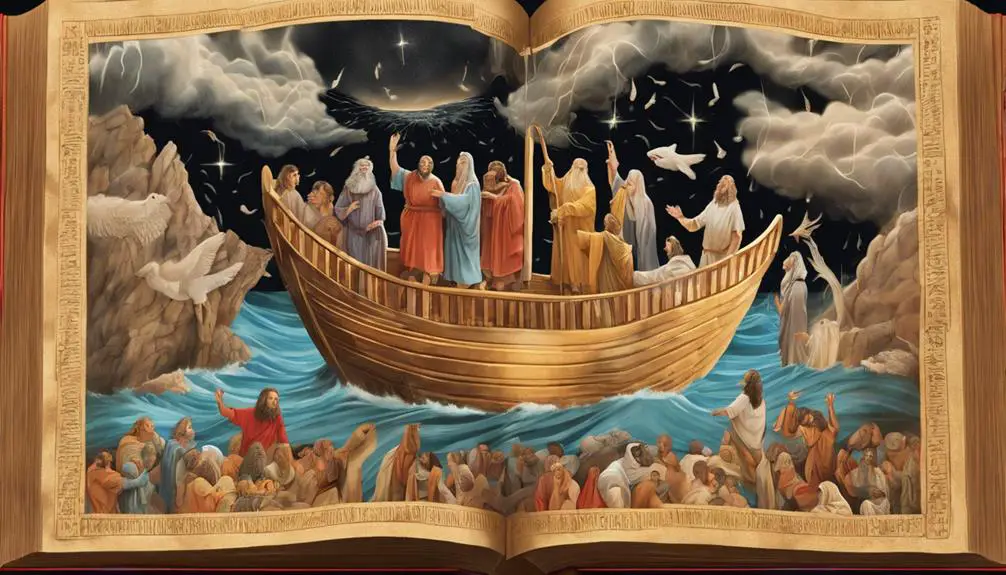
The Bible in Pictures
Consider Michelangelo's work in the Sistine Chapel, where he captured scenes from Genesis to the Last Judgement in a series of breathtaking frescoes.
Now, imagine the entire Bible presented in such a visual form, where each story, character, and moral lesson is depicted through compelling artistry.
How might such a pictorial representation influence your understanding or perception of these revered narratives?
There's a rich tapestry of possibility here, just waiting for you to explore.
Key Takeaways
- Biblical stories like Genesis, Exodus, and Revelations are vividly illustrated and interpreted through various forms of art.
- Artistic interpretations of biblical narratives can enhance understanding and evoke strong emotional responses.
- Biblical art has a profound influence on religious, cultural, and societal landscapes, shaping societal norms.
- The diverse range of biblical art serves as a visual journey through the Bible, enriching the appreciation of its stories.
Exploring Genesis Through Art
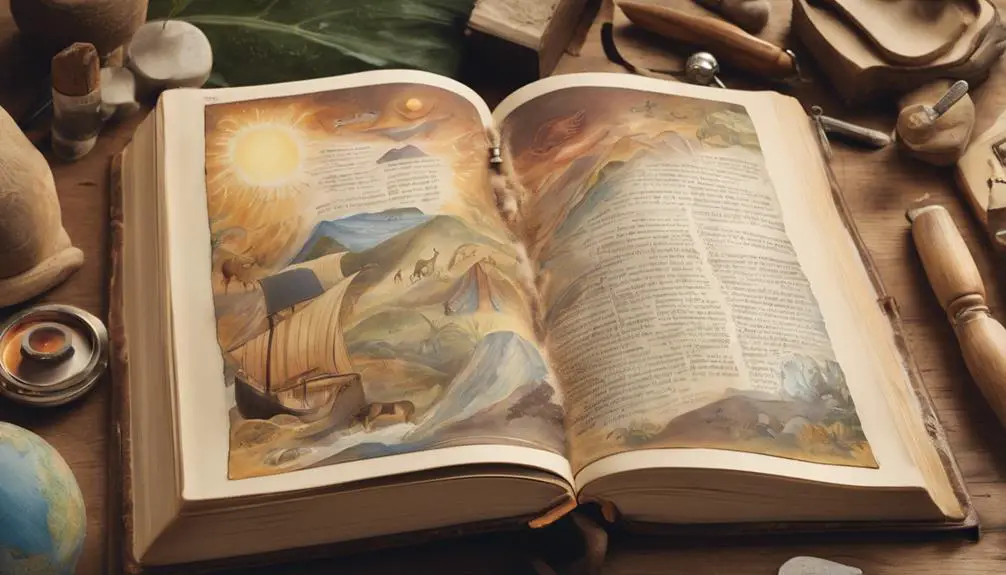
In delving into the world of Genesis through art, you'll uncover a myriad of interpretations that have captured the essence of this biblical narrative, providing a visual journey that enhances understanding and appreciation of these foundational stories.
Creation symbolism is often depicted through the use of light, representing the divine act of creation and the beginning of life. You'll see artists using intense light to represent the divine power and the moment of creation. It's a striking technique that serves to emphasize the divine intervention in the creation of the universe.
Eden's imagery, on the other hand, usually encompasses lush, verdant landscapes teeming with life. Here, artists have cleverly utilized color and texture to convey the paradise's abundance and tranquility. You'll note the frequent use of vibrant greens and blues, symbolizing life and fertility, contrasted with the soft, earthy tones representing the peace and harmony of Eden before the fall of man.
In essence, the artistic interpretations of Genesis aren't merely literal translations of the text. They're intricate layers of symbolism and imagery that enrich your understanding of the biblical narrative, bringing you closer to the profound spiritual truths contained within its verses.
Artistic Interpretations of Exodus
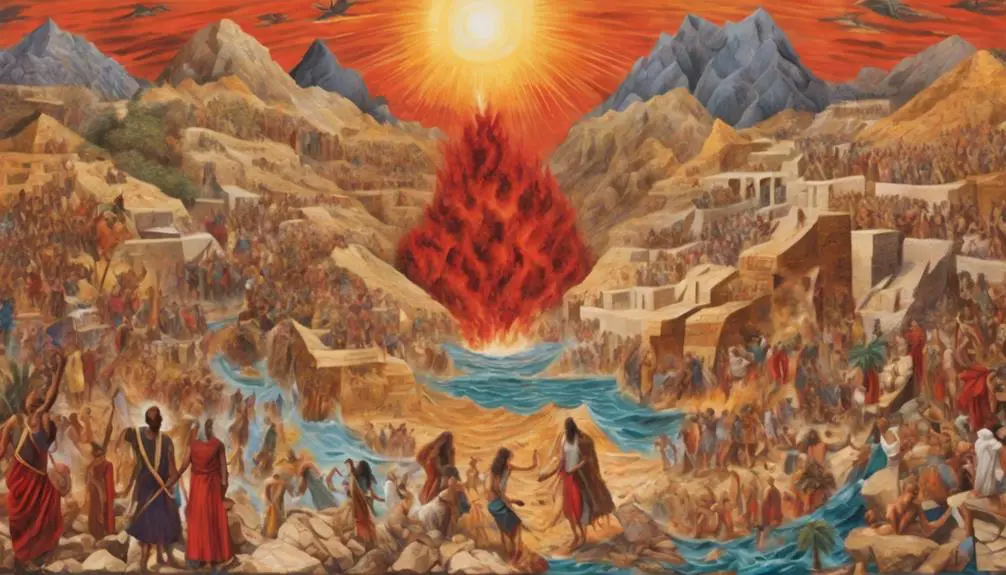
Moving onto Exodus, you'll find artists' depictions are steeped in drama and emotion, effectively capturing the epic journey of the Israelites from bondage to liberation. From the burning bush to the parting of the Red Sea, you'll see a wide range of interpretations that express the high stakes of this pivotal narrative.
- Symbolism in Exodus Artwork: Artists use visuals to convey complex theological ideas. The serpent staff, for instance, represents divine power, while the parted sea symbolizes God's intervention.
- Moses' Portrayal Variations: Moses is depicted differently across artworks. Some portray him as a humble shepherd, others as a mighty prophet, highlighting the multifaceted nature of his character.
- Emotion in Exodus: The art often captures the raw emotion of the Israelites' ordeal, from despair to elation, providing a human perspective to the divine narrative.
In these interpretations, you'll notice how the artists manipulate color, form, and composition to emphasize certain elements of the story. They use these techniques to evoke feelings of sympathy, awe, or fear, effectively immersing you into the narrative. This exploration of Exodus through art allows you to experience the tale in a more visceral, emotive way.
Depicting the Life of Jesus
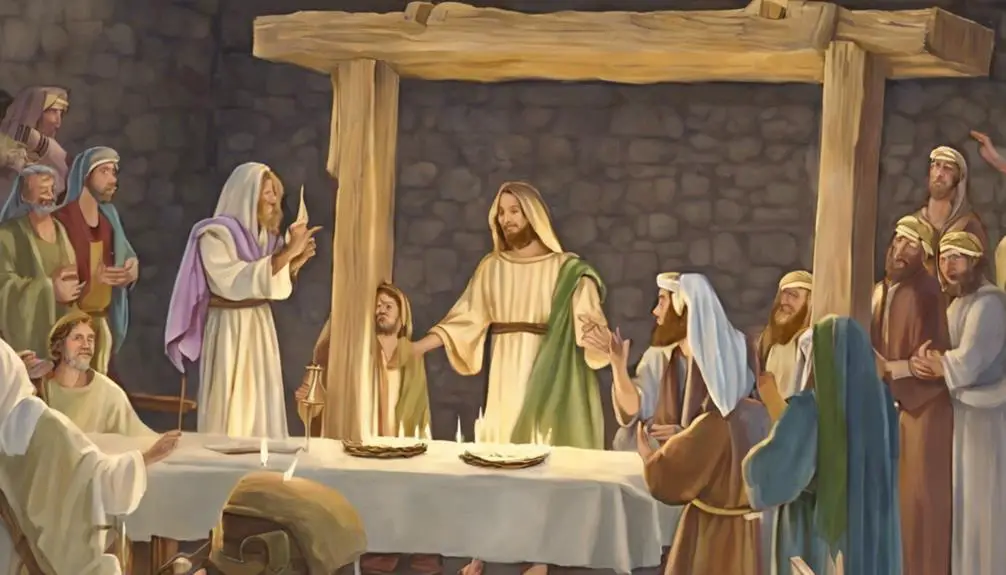
Switching our focus from the Old Testament to the New Testament, let's explore how the life of Jesus is brought to life through evocative artistic interpretations. The depth and diversity of these depictions are truly fascinating, creating a visual narrative that complements the biblical text.
'Jesus' Miracles Illustrated' is a compelling sub-genre within this visual narrative. Artists capture the divine energy and transformative power of these events, often using dramatic light and shadow to emphasize the miraculous elements. Consider the depiction of Jesus calming the storm; the raw, chaotic force of nature is beautifully contrasted with the calm, serene figure of Jesus, creating an image of divine control and reassurance.
Moving on to 'Visualizing Sermon on the Mount', an interesting shift can be observed. Here, the focus is less on the miraculous and more on the teachings of Jesus. Artists strive to capture the gravity and wisdom of this monumental event, using composition and perspective to emphasize the number of listeners and the captivating presence of Jesus.
In a nutshell, these artistic interpretations provide a visual exploration of Jesus' life, enhancing our understanding of his miraculous deeds and profound teachings.
Revelations: A Visual Journey
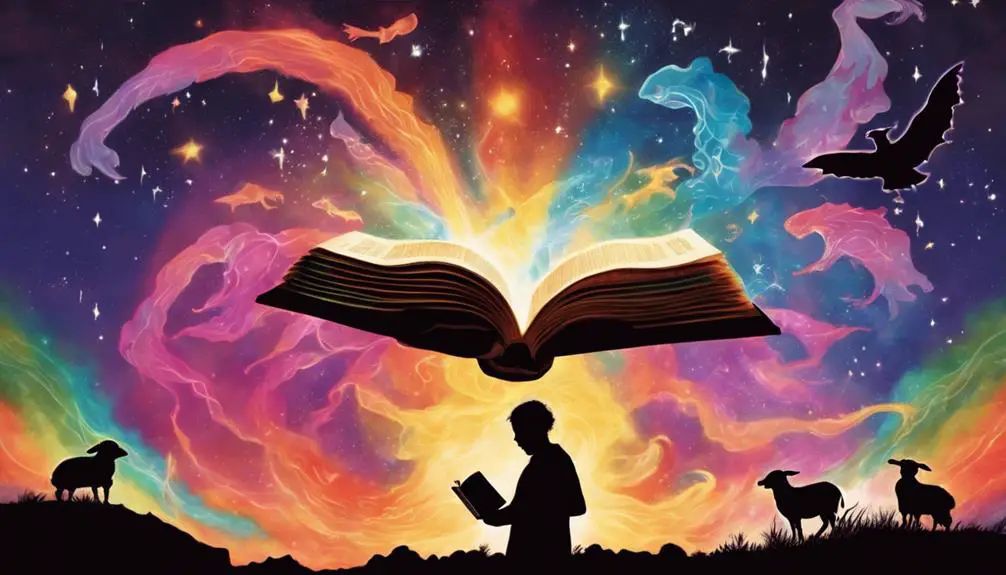
Let's embark on a visually stunning journey through the Book of Revelation, where artists' renditions have sought to capture the dramatic and complex visions described in this final book of the New Testament. The Symbolic Imagery and Apocalyptic Visions present in Revelation have been interpreted by countless artists, each bringing their unique perspective to the biblical narrative.
- Symbolic Imagery: The use of symbols in Revelation is profound. Artists have employed them to communicate deep spiritual truths. Look for the lamb, the dragon, and the woman clothed in the sun in various artworks.
- Apocalyptic Visions: The end-time prophecies have been a central theme for many artists. Their interpretations range from literal to abstract, each providing a unique glimpse into the apocalyptic narrative.
- Artistic Interpretation: Each artist's work is a reflection of their interpretation of the text. Some focus on the terror and judgement, while others highlight the hope and redemption.
The Impact of Biblical Art
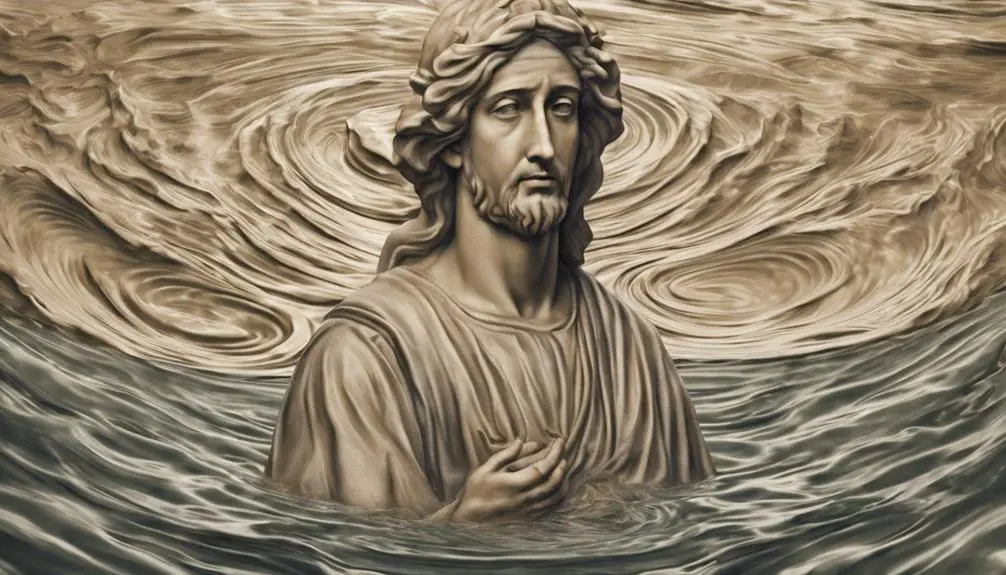
Through the lens of biblical art, one can perceive the profound influence it has had on society, shaping not only religious beliefs but also cultural, social, and political landscapes. The artistic influence of biblical narratives isn't solely confined within the church's walls but permeates every facet of life.
Biblical art doesn't only depict holy stories but acts as a symbolic representation of societal norms and values, guiding individual behavior and collective ethics. It's a potent tool of communication, bridging gaps between different epochs, cultures, and languages. The iconic imagery of biblical art, from the Last Supper to the Crucifixion, has become entrenched in the collective consciousness, providing a shared vocabulary of symbols and metaphors.
This artistic influence has also shaped artistic trends and movements. You'll notice the biblical themes in the works of renowned artists like Michelangelo and Leonardo Da Vinci, underlining the Bible's impact on the Renaissance period. However, biblical art isn't merely a historical relic; it continues to inspire contemporary artists, reflecting and challenging current social issues through the biblical lens.
In essence, biblical art has left an indelible mark on society, echoing the age-old stories and values in a visually compelling manner, and thus shaping our world in ways you mightn't even realize.
Frequently Asked Questions
How Has the Interpretation of Biblical Images Changed Over Time?
Over time, you've seen a shift in the interpretation of biblical images. This iconographic evolution has resulted from cultural changes, different artistic styles, and evolving theological perspectives.
Symbolic representations once universally understood have shifted, creating a rich tapestry of interpretations. Thus, biblical imagery doesn't stay static; it evolves, providing a unique lens to understand the ever-changing relationship between society, faith, and art.
What Are Some Controversies Surrounding the Depiction of Biblical Events in Art?
You're treading on controversial ground when depicting biblical events in art. Iconoclastic movements, for instance, have stirred up heated debates, challenging the appropriateness and accuracy of such representations.
Biblical literalism also plays a part, as it insists on strict adherence to the exact wording of scriptures. This leads to disputes over artistic interpretations that may not match the literal text.
It's a complex, contentious field.
Are There Any Significant Differences in Biblical Art Across Various Cultures?
Yes, you'll notice significant differences in biblical art across various cultures. These differences stem from each culture's unique interpretation and artistic influence.
For instance, Western and Eastern depictions of biblical events often contrast greatly. Western art typically emphasizes realism and individualism, while Eastern art tends to focus on symbolism and collective identity.
These cultural interpretations provide diverse perspectives on the same biblical stories.
How Does Biblical Art Compare to the Textual Descriptions in the Bible?
When you compare biblical art to textual descriptions in the Bible, you'll find artistic accuracy varies. Artists often interpret biblical symbols and events through their cultural lens, adding or omitting details. Some maintain strict adherence to textual depictions, while others lean towards symbolic representation.
It's essential to view these works as interpretations, not literal transcriptions. Their value lies in their ability to evoke emotional responses and provide visual context, rather than their strict accuracy.
Can the Bible in Pictures Be Considered as a Form of Biblical Study or Is It Purely an Artistic Endeavor?
You can indeed consider 'The Bible in Pictures' as a form of biblical study. Known as Visual Theology, this practice uses art to delve into biblical themes. Picture Bibles aren't purely artistic endeavors; they also provide an alternative approach to understanding scripture.
However, they should be utilized alongside traditional text-based study for a comprehensive view. Therefore, both artistic expression and scholarly analysis coexist in this form of biblical exploration.
Conclusion
So, you've journeyed through the Bible, not with words, but through the powerful and evocative medium of art. You've seen Genesis, Exodus, Jesus's life, and Revelations unfold in vibrant, imaginative interpretations.
Biblical art's impact is undeniable; it breathes life into ancient stories, letting us see them anew. It's a testament to art's transformative power, proving that even millennia-old narratives can resonate deeply in our modern world.

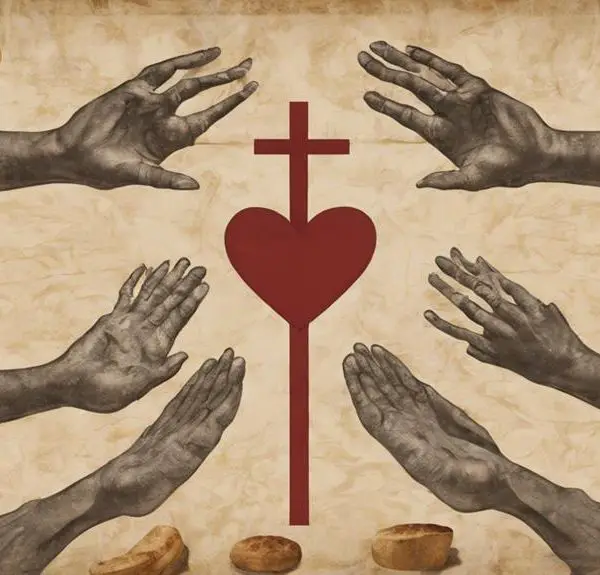

Sign up